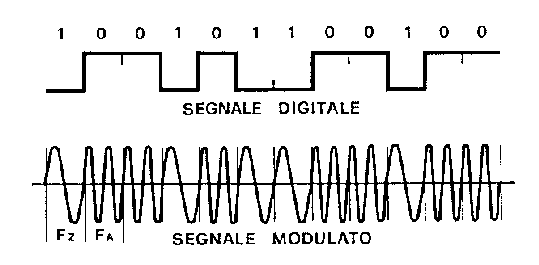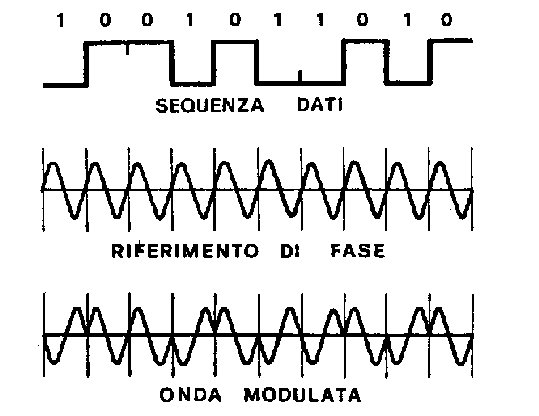DIGITAL
RADIO MODULATION
Radio amateur transceivers can
not be connected directly to terminals or computers to perform digital data
transmissions. The binary signal exiting from the serial port of a computer
has a rectangular shape, has a strong DC component and a great amount of harmonic
frequencies. Transceivers are generally planned for voice (or telegraphy) transmission
and admit particularly frequency modulation (F3A), thus they can not transmit
DC (frequency leading towards zero) nor frequencies that exceed human voice
ran ge (passband being almost 3 KHz wide).
To overcome these and other obstacles
you don't have to re-plan or rebuild a transceiver. You can instead interpose
between the P.C. and the transceiver a particular modulator/demodulator which
transforms digital signals of the P.C. into audio signals bet ween 300 and 3,000
KHz (passband of the transmitter modulator); these signals are thus sent to
the transceiver as if coming from a microphone. The device, normally called
a modem, generates a continuous sinusoid signal centered in the L.F. passband
of th e transmitter, whose parameters (amplitude, frequency, phase) are varied
by the serial digital signal coming from the P.C.
The transfer in phonic band is obtained
modulating a sinusoid signal, whose frequency is in the L.F. passband of the
transmitter (nearly 300 - 3,000 Hz), by means of the digital signal coming from
the P.C. The techniques of modulation are basically three :
- FM or frequency modulation (for speeds up
to 1,200 bytes/sec.)
- PSK or phase modulation (for speeds up to
4,800 bytes/sec.)
- combined phase and amplitude modulation (for
higher speeds)
Frequency modulation pre-sets a given frequency
value in the generated sinusoid signal to each of the two logic statuses 0
and 1, as shown in figure:

Phase modulation pre-sets two different phases
of the carrier wave to the two logic statuses 0 and 1; as shown in figure
below, for level 0 waveform is modulated in phase with the reference mark,
that is phase remains unchanged, whilst for symbol 1 there is a leap of 180
° and thus phase inversion; during reception obviously it is mandatory for
the receiver to have a phase reference to discriminate variations.


Ham radio Data Center - free schematics | Free HAM Directory | About me | Acronyms | CW | Data Sheets | Docs | Download | E-mail | HOME | Ham projects | Hobby circuits | Photo galery | PIC | QTH photos |
Sign in my guestbook | View my guestbook ]
© 2001 - YO5OFH, Csaba Gajdos

